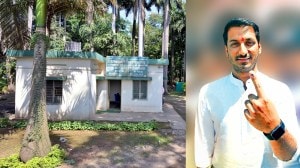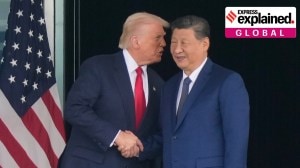Police force or political handmaiden?
Julio Ribeiro When the followers of the Prati Shiv Sena chief Bandhu Shingre attacked the American Consulate in 1982, the armed police gu...

Julio Ribeiro
When the followers of the Prati Shiv Sena chief Bandhu Shingre attacked the American Consulate in 1982, the armed police guard on duty immediately responded by firing at one of the assailants. A police van arrived at the scene within minutes and arrested the remaining miscreants. The Head Constable and those on duty were duly rewarded for their initiative.
This episode holds a lesson for our police force. When it is properly led, the officers and men are encouraged to act on their own to uphold the law. Do they have the same confidence today? It is unlawful for Shiv Sainiks to assault any citizen on the command of their supreme leader or otherwise. To attack the residence or person of the leader of the opposition is certainly not an ordinary case of street violence. The law is very clear on the subject of the duty and powers of the police to disperse unlawful assemblies and to keep order on the streets. As per the Criminal Code and the Bombay Police Act, it is incumbent on the seniormost officer present to take charge, give orders to the mob to disperse, and if it refuses, use force to enforce compliance.
The Bible of the police force, the Police Manual, contains departmental instructions on how policemen should enforce the law. It enjoins policemen to use minimum force commensurate with the exigencies of the situation. If a Magistrate is present or easily available, he should be requested to attend so that his orders are obtained before force is used.
In the case of the attack on Bhujbal’s residence, the Sainiks are reported to have gathered in the neighbouring residence of Sena minister Shabir Shaikh, and mounted the attack from there. The officers present may have been taken unawares, or they could have been overwhelmed by the sheer numbers. The exact facts have to be established.
In any case, it was patently unjust for the government to have ordered the suspension of a couple of Inspectors to save face. Considering that Sainiks have been routinely breaking the law with impunity after their party came to power, the mindset of the Inspectors would favour inaction in this case also. The seniormost officers of the city police are known to visit the Sena chief almost every other day to pay their obeisance. Since an attack on the leader of the opposition cannot take place without a green signal from Matoshri’, subordinate police officers can hardly be blamed if they felt that the attack had official sanction. If the law is to be strictly interpreted, the officers should have resisted the Sainiks. They may have been compelled to open fire on the assailants like the constables at the American Consulate. But fear of offending the Sena chief and their own big bosses must have played on their minds.
A politicised and subservient police force is in no position to enforce the law as laid down in the statutes. It presently enforces the law selectively according to the wishes of the party in power. Unless it is removed from political control through the establishment of a more impartial system, as recommended by the National Police Commission, this situation will remain.
There is some confusion in the lay person’s mind about police powers to fire on riotous nobs. The popular perception is that the police has to first lathi charge, then graduate to tear gas and resort to firing only if these fail. If firing is inevitable, then it should first be in the air before it is aimed below the waist. If this was true, the constables guarding the Consulate would certainly have had to be punished rather than rewarded.
Mumbai’s police would have been severely criticised as the miscreants would have succeeded in their diabolical plan. It is impractical to lay down definite procedures that apply to each and every occasion. If rioting and arson was the result of sudden provocation, like the garlanding of Ambedkar’s statue, the police force at a small chowky would find itself totally outnumbered.
Which is why a small contingent of the S R P, led by a very junior Sub-Inspector, appeared on the scene and opened fire, killing as many as ten men. A lathi charge is possible if the mob is in close proximity. Tear gas can be used if it is available, though experience has shown that it is largely ineffective in the face of determined law-breakers. The decision to fire is not an easy one to take. Junior officers rarely take such decisions on their own. They normally allow the situations to deteriorate and await their seniors’ arrival. It is incorrect for those not physically present there to judge what should have been the minimum force that could have dispersed the mob. The senior-most official present would be the best judge. What needs to be determined is whether the officer was unnecessarily cruel, biased or arbitrary in his actions. Mistakes have to be condoned. If they are not, junior police officers will never use any initiative. And that would be disastrous in the long run.
The perception that firing must first be directed in the air is also erroneous. This is discouraged from the tactical viewpoint as it encourages miscreants to become bolder. The Manual directs firing to injure by aiming below the waist. This is practically impossible in live situations. The men do not have time to aim, their rifles are old and uncalibrated. They themselves have been away from training and have not practised firing for years together because of continuous deployment.
The picture is truly grim. A set of miscreants are allowed freedom to destroy and vandalise because they enjoy official patronage and another set that is greatly exercised because their leader has been insulted, evokes a sharp reaction from the same guardians of law. We have a politicised police force, led by politicised leaders, out of touch with their own men, who are then left to fight own battles without any proper training or motivation.



- 01
- 02
- 03
- 04
- 05




























